About Potato Nematodes
Plant parasitic nematodes are microscopic roundworms that feed on plant roots and live in soil and plant tissues.
Environment & Host
Nematodes vary in their environmental requirements and more than one species may occur in a field. Northern root knot nematodes and potato cyst nematodes prefer cooler temperatures much like potatoes. Some nematodes have a wide host range and attack many agricultural crops, like root knot nematodes. Others, such as potato cyst nematodes, are highly specialized and attack only a few crops.
Symptoms & Damage
All potato nematodes can cause yield loss or unmarketable tubers if left uncontrolled or unmanaged. Although symptoms can vary by plant, most nematodes cause damage similar to nutrient deficiencies like stunting of plants and yellowing of leaves.
Diagnostics
Knowing both the species of nematode you’re dealing with and the population levels is critical for successful management decisions. The best way to find out if a nematode is present is by sending soil samples to a diagnostic laboratory for identification and enumeration.
Management
It’s essential to safeguard pest-free fields from the introduction of nematode pests, especially regulated species such as potato cyst nematodes. If a potato nematode infestation occurs, the best management practices to gain control include rotation, nematicides, and in some cases use of a resistant variety. Sanitation and clean seed are also critical to prevent the spread of nematodes into other clean fields.
The four species of potato nematodes
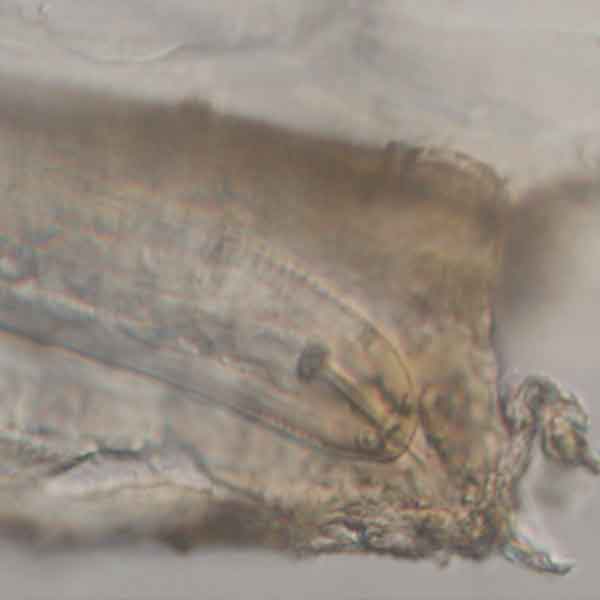
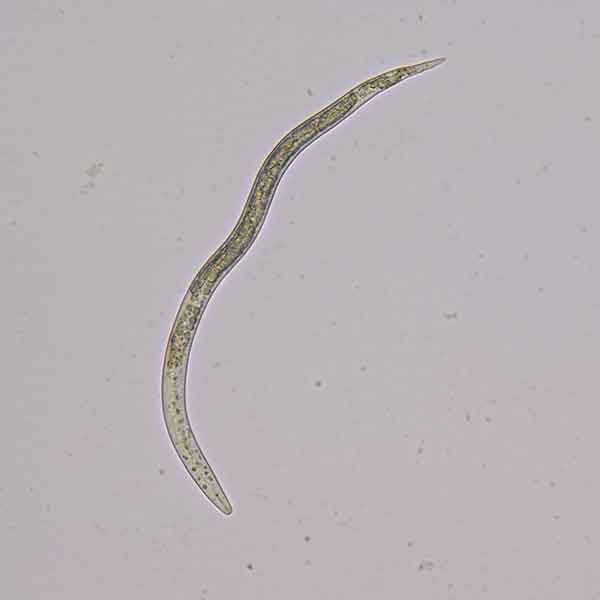
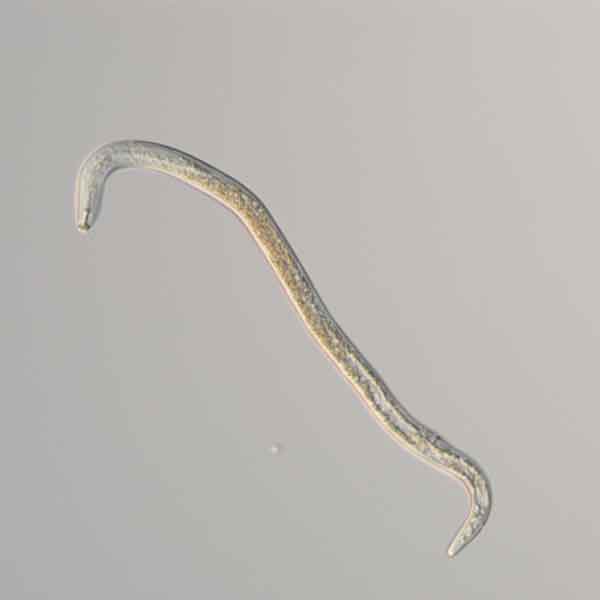
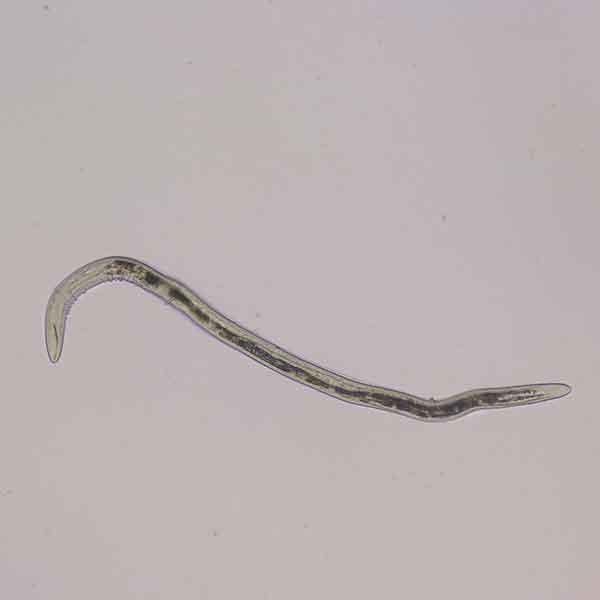
Potato Cyst Nematodes
The potato cyst nematode (PCN), Globodera pallida and Globodera rostochiensis, found in Idaho and New York, respectively, are regulated quarantine pests in the United States. Potato cyst nematodes originated in the Andes with their primary host, potato, and are now found worldwide in most potato growing regions. PCN is difficult to control because eggs can remain viable in cysts for decades and only hatch in the presence of signals from a host or closely related plant. Each cyst contains hundreds of eggs, which can lead to exponential population increase when a susceptible potato variety is planted. PCN can cause up to 80% yield loss when infestation levels are high. The infestation of PCN in the US has been contained by USDA-APHIS and respective state departments of agriculture. The NY infestation with the golden nematode (G. rostochiensis) is controlled through a strict rotation with resistant varieties. For the pale cyst nematode (G. pallida), lack of resistant varieties precludes management with rotation and an eradication effort is in place through the use of soil fumigants.
Resources:
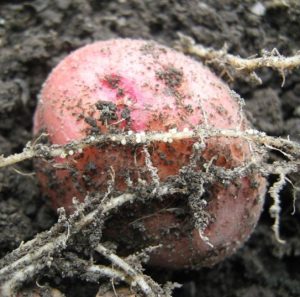
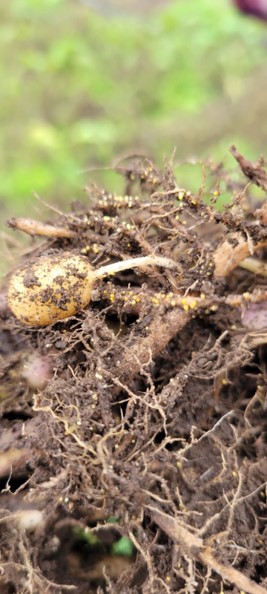
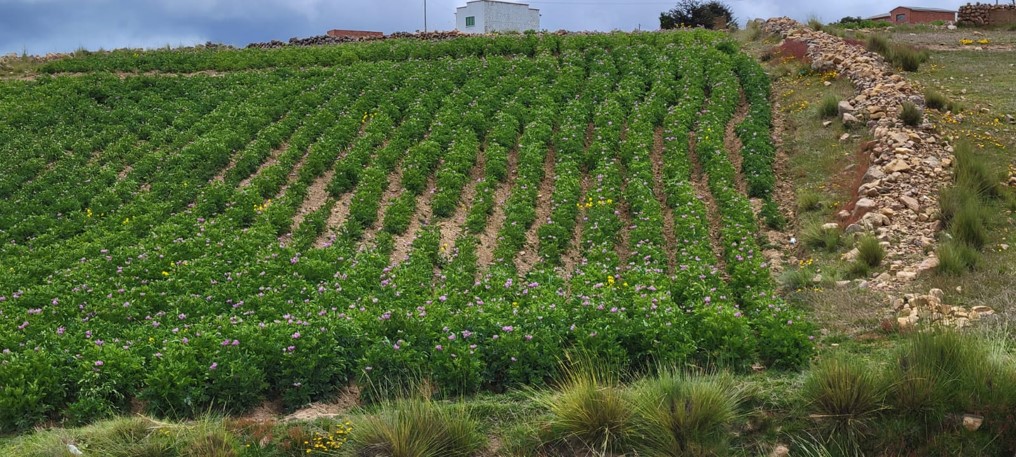
Root Knot Nematodes
Root-knot nematodes are found in all potato growing regions of the world. In the US, the Northern root-knot nematode (Meloidogyne hapla) is widespread across cooler climates. The Columbia root-knot nematode (Meloidogyne chitwoodi) has more restricted distribution and is only found in the northwest region of the USA. Both species can infect potato tubers and cause a bumpy or rough appearance, and dark spots just under the surface of the skin. These internal and external blemishes diminish the potato market value. The Columbia root-knot nematode is a quarantine nematode in certain export markets, for instance with Mexico. There are few or no potato varieties resistant to RKN.
Resources:
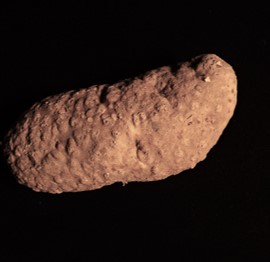
Lesion Nematodes
Lesion nematodes damage roots by feeding and moving through cortical tissues. Lesion nematodes cause reddish brown lesions on the roots that turn black later. Pratylenchus penetrans increases the susceptibility of potato plants to Verticillium wilt and blemishes tubers.
Resources:
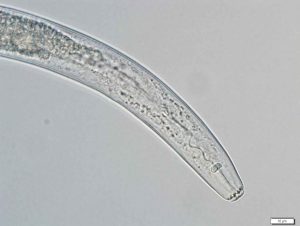
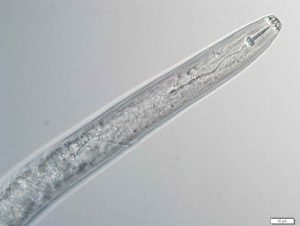
Stubby Root Nematodes
Stubby root nematodes feed on root surfaces and can result in the formation of numerous stubby roots. Yield loss has not been reported. The major problem caused by this nematode species is transmission of tobacco rattle virus, which causes corky ringspot disease on developing tubers. Stubby root nematodes cause numerous short and stunted (stubby) roots, and corky ringspot symptoms on tubers if the nematode is carrying TRV. The virus causes corky ringspot (CRS) in potato tubers, resulting in extensive damage to tuber quality, which can lead to crop rejection.
Resources:
